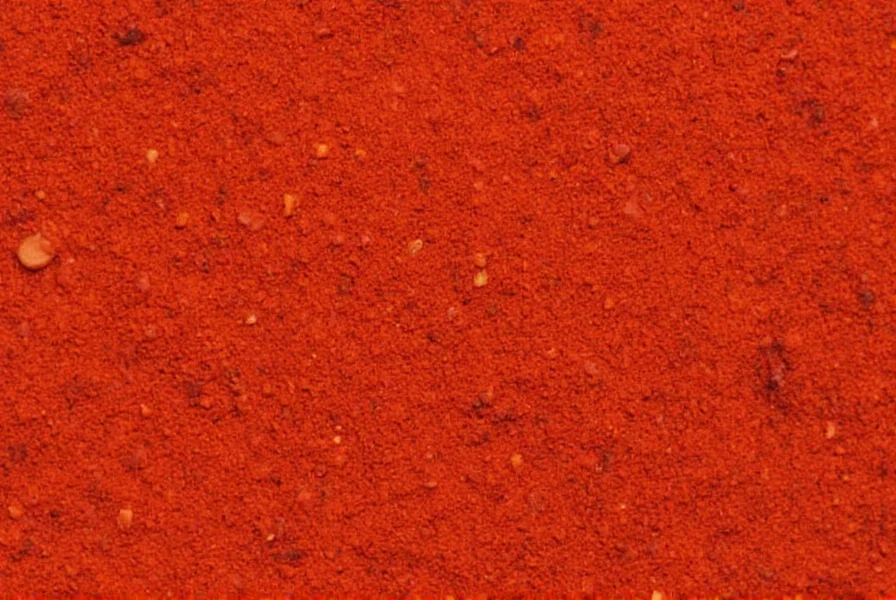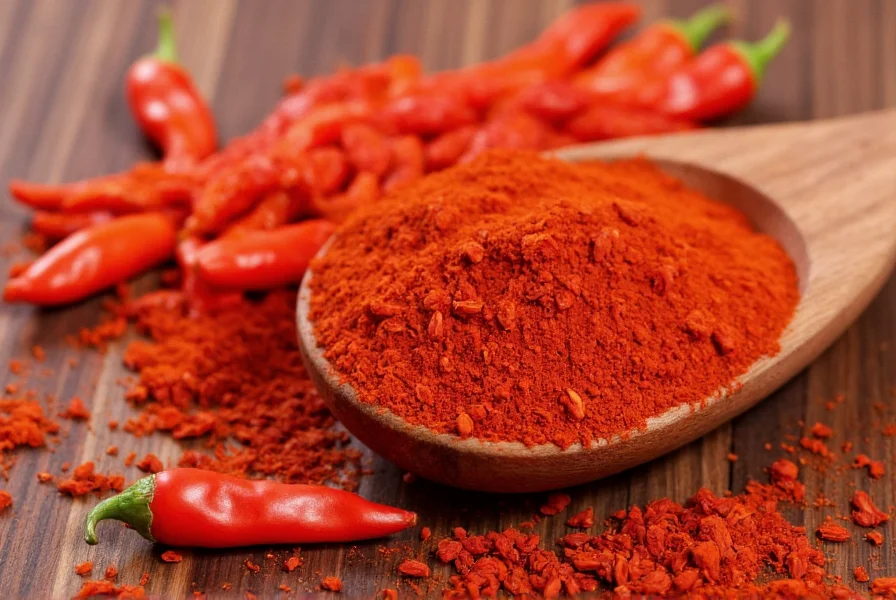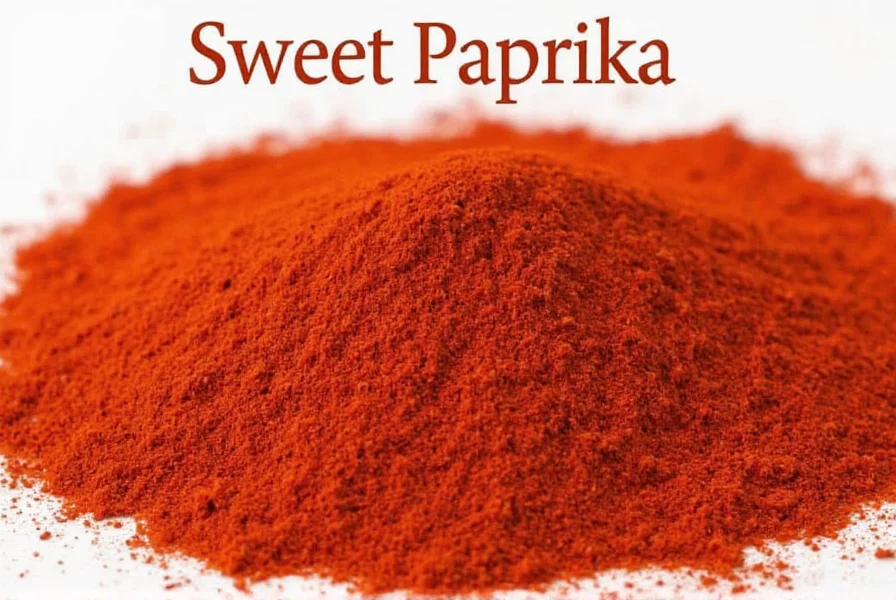Sweet paprika stands as one of the most versatile spices in global cuisine, prized for its rich color and delicate flavor profile. This ground spice originates from sweet red peppers that undergo careful drying and grinding processes to preserve their natural sweetness and vibrant hue. Unlike its spicy counterparts, sweet paprika contains negligible amounts of capsaicin, the compound responsible for heat in chili peppers, making it accessible to all palates.
What Exactly Is Sweet Paprika?
Sweet paprika, scientifically known as Capsicum annuum, comes from specific varieties of large, sweet red peppers cultivated primarily in Hungary, Spain, and California. The production process involves harvesting fully ripe peppers, removing seeds and stems, then air-drying them before grinding into a fine powder. This careful processing preserves the natural sugars in the peppers while developing complex flavor compounds through the Maillard reaction during drying.
The distinctive deep red color of quality sweet paprika comes from high concentrations of carotenoids, particularly capsanthin. These natural pigments not only provide visual appeal but also offer antioxidant properties. Authentic sweet paprika should have a bright, consistent red color without dark specks or uneven tones, which can indicate improper drying or processing.
Sweet Paprika Varieties Compared
| Type of Paprika | Heat Level (Scoville) | Flavor Profile | Primary Culinary Uses |
|---|---|---|---|
| Sweet Paprika | 0-100 SHU | Mild, sweet, slightly fruity | Goulash, deviled eggs, potato salad, roasted vegetables |
| Smoked Paprika (Pimentón) | 0-100 SHU | Smoky, earthy, complex | Paella, chorizo, barbecue rubs, bean dishes |
| Hot Paprika | 500-1,000 SHU | Spicy, sharp, pungent | Spicy stews, hot sauces, meat marinades |
| Hungarian Sweet Paprika | 0-50 SHU | Delicate, floral, sweet | Traditional Hungarian goulash, chicken paprikash |
Understanding Sweet Paprika's Flavor Profile
Sweet paprika delivers a nuanced flavor experience that goes beyond simple sweetness. High-quality sweet paprika offers subtle notes of dried fruit, bell pepper, and earthiness with a clean finish. The best varieties have a slight floral aroma reminiscent of dried roses, a characteristic particularly prominent in premium Hungarian sweet paprika.
When evaluating sweet paprika quality, consider these sensory characteristics:
- Aroma: Should smell fresh and slightly sweet, not musty or dusty
- Color: Vibrant red without brown or orange undertones
- Taste: Mild sweetness with subtle pepper flavor, no bitterness
- Mouthfeel: Fine powder that dissolves smoothly, not gritty
Optimal Culinary Applications for Sweet Paprika
Sweet paprika shines in dishes where you want vibrant color and pepper flavor without heat. Professional chefs often use it as both a seasoning and a natural coloring agent. Unlike many spices, sweet paprika benefits from being added at multiple stages of cooking:
For immediate flavor impact, add sweet paprika during the last 5-10 minutes of cooking. To develop deeper flavor complexity, bloom it in oil at the beginning of cooking. The oil-soluble compounds in paprika release their full potential when heated gently in fat. Try incorporating sweet paprika into these applications:
- As a finishing spice on deviled eggs or potato salad
- In rubs for roasted chicken or pork
- Blended into mayonnaise for colorful dips
- Added to tomato-based sauces for depth
- Mixed with breadcrumbs for colorful coatings

Proper Storage Techniques for Maximum Freshness
Sweet paprika's delicate flavor compounds degrade quickly when exposed to light, air, and moisture. To maintain optimal quality, store sweet paprika in an airtight container away from direct light and heat sources. The refrigerator provides ideal storage conditions, extending shelf life to 12-18 months compared to 6-8 months at room temperature.
Test your sweet paprika's freshness by checking for these signs:
- Faded color (should be vibrant red)
- Musty or stale aroma
- Lack of flavor when tasted
- Clumping or moisture in the container
For best results in cooking, replace sweet paprika every 6-12 months. Older paprika loses its vibrant color and develops a bitter, dusty flavor that can negatively impact dishes.
Nutritional Benefits and Health Considerations
Beyond its culinary applications, sweet paprika offers notable nutritional benefits. Just one teaspoon (2 grams) contains:
- Approximately 6 calories
- 15% of the daily recommended value of vitamin A
- Significant antioxidant compounds including carotenoids
- Small amounts of vitamin E and B6
The carotenoids in sweet paprika, particularly capsanthin and beta-carotene, function as powerful antioxidants that may help reduce inflammation and support eye health. Unlike hot paprika varieties, sweet paprika doesn't contain capsaicin, making it suitable for individuals with sensitive digestive systems.
Effective Substitutes When Sweet Paprika Is Unavailable
When you need a sweet paprika substitute, consider these alternatives based on your specific recipe needs:
- Pimento powder: Made from the same sweet red peppers, offers nearly identical flavor
- Mild chili powder: Use ¾ teaspoon chili powder plus ¼ teaspoon garlic powder per teaspoon of sweet paprika
- Paprika blend: Mix equal parts smoked and hot paprika to neutralize heat while maintaining color
- Roasted red pepper powder: Provides similar color and mild flavor
Avoid substituting with cayenne or other hot peppers, as they'll introduce unwanted heat. For dishes where color is critical but flavor less so, a small amount of tomato paste can provide similar visual appeal without the pepper flavor.

Common Questions About Sweet Paprika
Is sweet paprika the same as regular paprika?
Sweet paprika is actually a specific type of regular paprika. While "regular" paprika can sometimes refer to mild varieties, sweet paprika specifically denotes paprika made from sweet red peppers with no heat. Regular paprika might include mildly spicy varieties, while sweet paprika contains zero capsaicin and offers pure sweetness.
Can I substitute sweet paprika for smoked paprika?
You can substitute sweet paprika for smoked paprika in a 1:1 ratio when you want to maintain color without smoke flavor, but the dish will lack the characteristic smokiness. For closer approximation, add ⅛ teaspoon liquid smoke per teaspoon of sweet paprika, or use a combination of sweet paprika and a small amount of chipotle powder for both color and smoky notes.
Why does my sweet paprika taste bitter?
Bitterness in sweet paprika usually indicates it's past its prime or was exposed to excessive heat during cooking. Paprika burns easily when added directly to hot oil or dry heat. Always bloom paprika in cool oil first, then gradually increase heat. Old paprika develops bitter compounds as its flavor compounds degrade over time. Properly stored, fresh sweet paprika should have a clean, sweet aroma without any bitterness.
What makes Hungarian sweet paprika special?
Hungarian sweet paprika benefits from specific growing conditions in Hungary's climate and soil, resulting in peppers with higher sugar content and more complex flavor compounds. Traditional Hungarian processing involves slow sun-drying and stone grinding, which preserves delicate flavor notes. The eight official Hungarian paprika classifications include three sweet varieties (Édesnöveszm, Csípősmentes csemege, and Csemege), with Édesnöveszm being the sweetest and most delicate.











 浙公网安备
33010002000092号
浙公网安备
33010002000092号 浙B2-20120091-4
浙B2-20120091-4